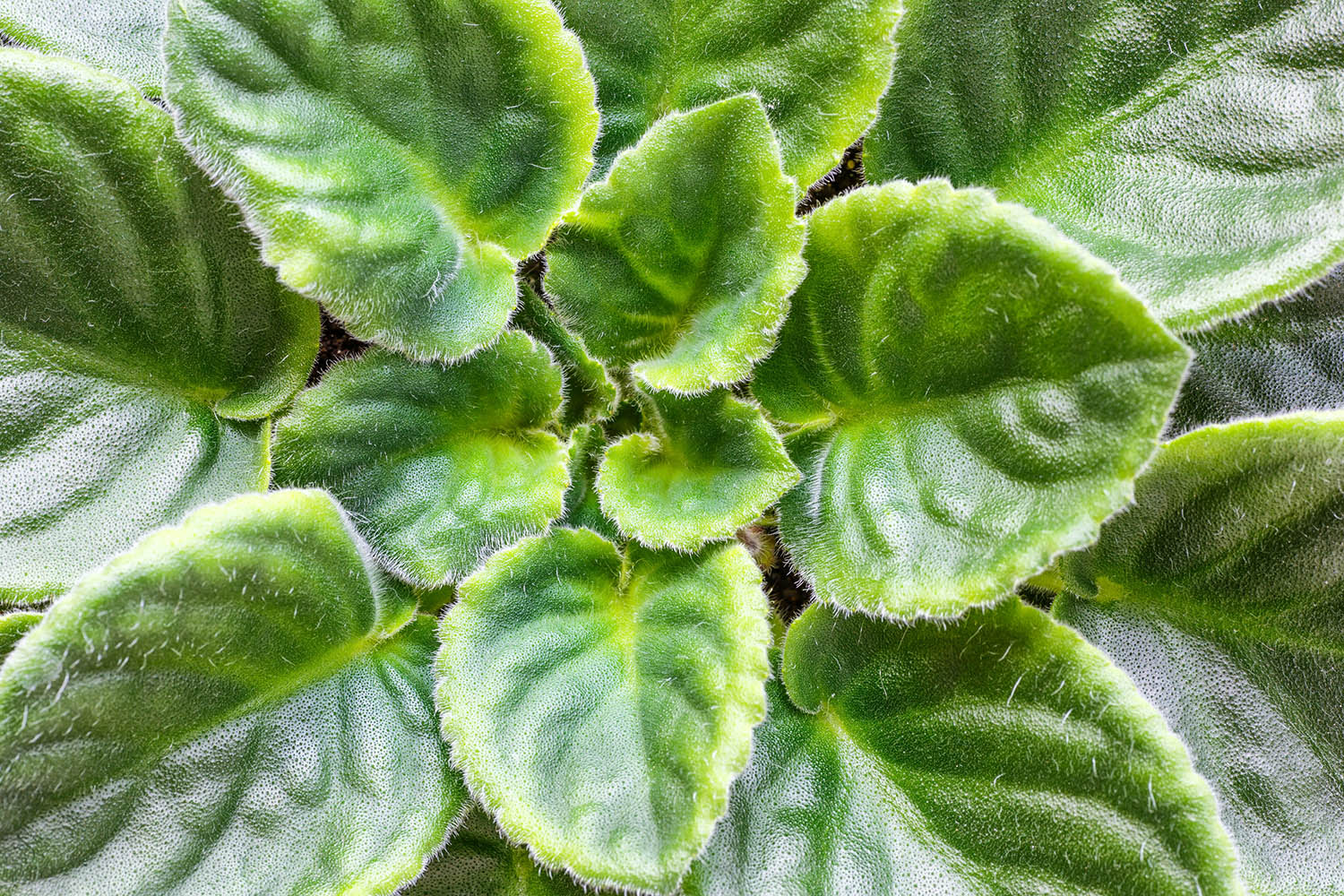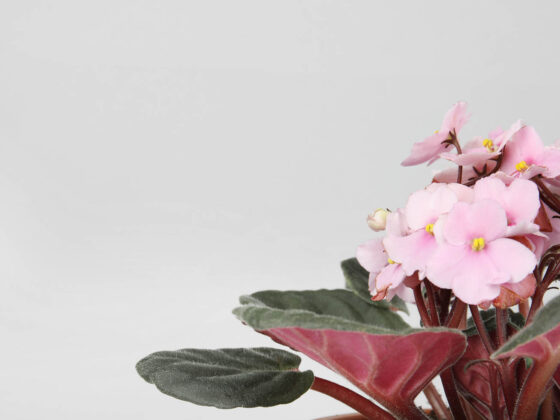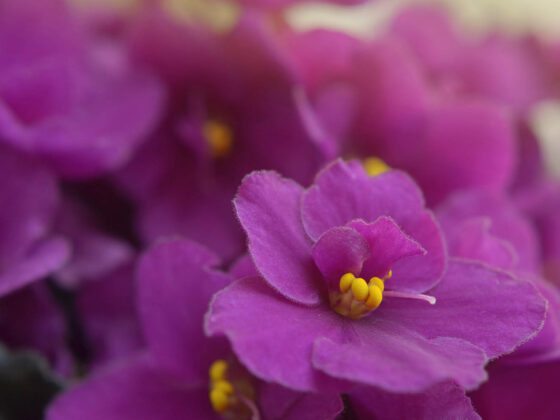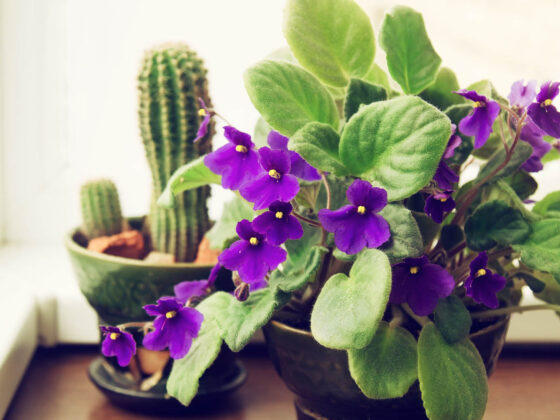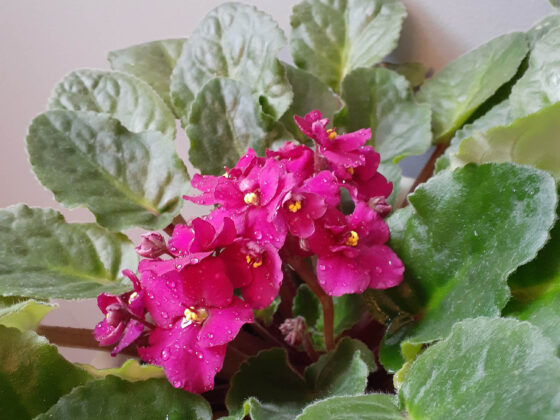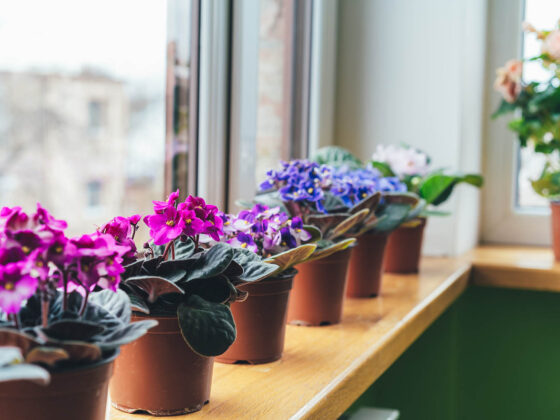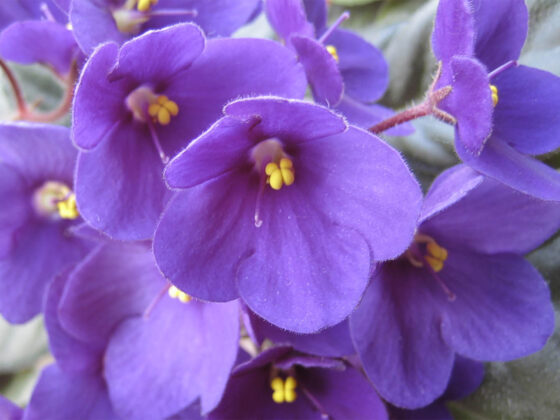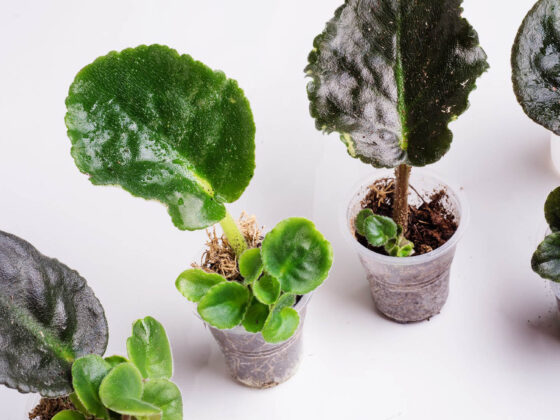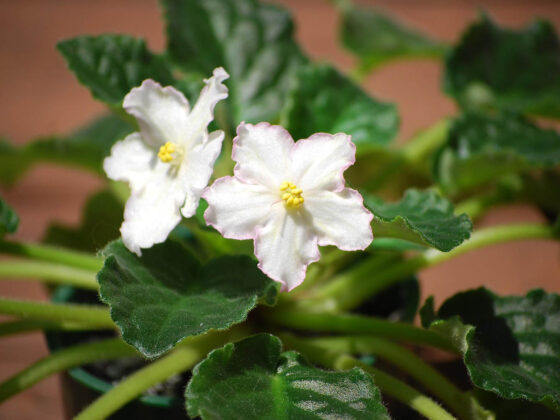African Violets are popular partly because they can flower all year round. So why isn’t yours? What’s keeping your Saintpaulia from producing the colorful blossoms that made it famous? In this post, we’ll take you through the most common reasons why an African Violet may not be blooming.
When an African Violet isn’t blooming, insufficient light is the most likely cause Other possibilities include poor watering habits, low temperatures, or lack of humidity. African Violets also won’t flower if their pots are too large, or if they’re expending lots of energy on roots and foliage.
Trying to “fix” the wrong thing could easily harm your plant. So make sure to carefully assess the growing conditions before deciding why your African Violet isn’t blooming. We’ll explain how to identify each of the problems we cover, and what you can do to solve it. Without further ado, here are the 7 most likely reasons your African Violet won’t flower.
#1: Your African Violet Needs More Light
Flowers take a lot of energy to produce, and they give nothing back to the rest of the plant. There’s only one way for your African Violet to get the energy to create those blooms: by absorbing light. If your plant’s location isn’t bright enough, it can’t flower.
This is the most common reason why African Violets don’t bloom. A Saintpaulia needs at least 8 hours of light per day to flower. To make it really happy, you should give it at least 12. And lots of indoor spaces don’t offer anywhere near that much illumination.
One clue that your Saintpaulia isn’t getting enough light is etiolation – long, pale, narrow leaves. Under-lit plants often grow this way to give themselves better odds of stumbling on a light source.
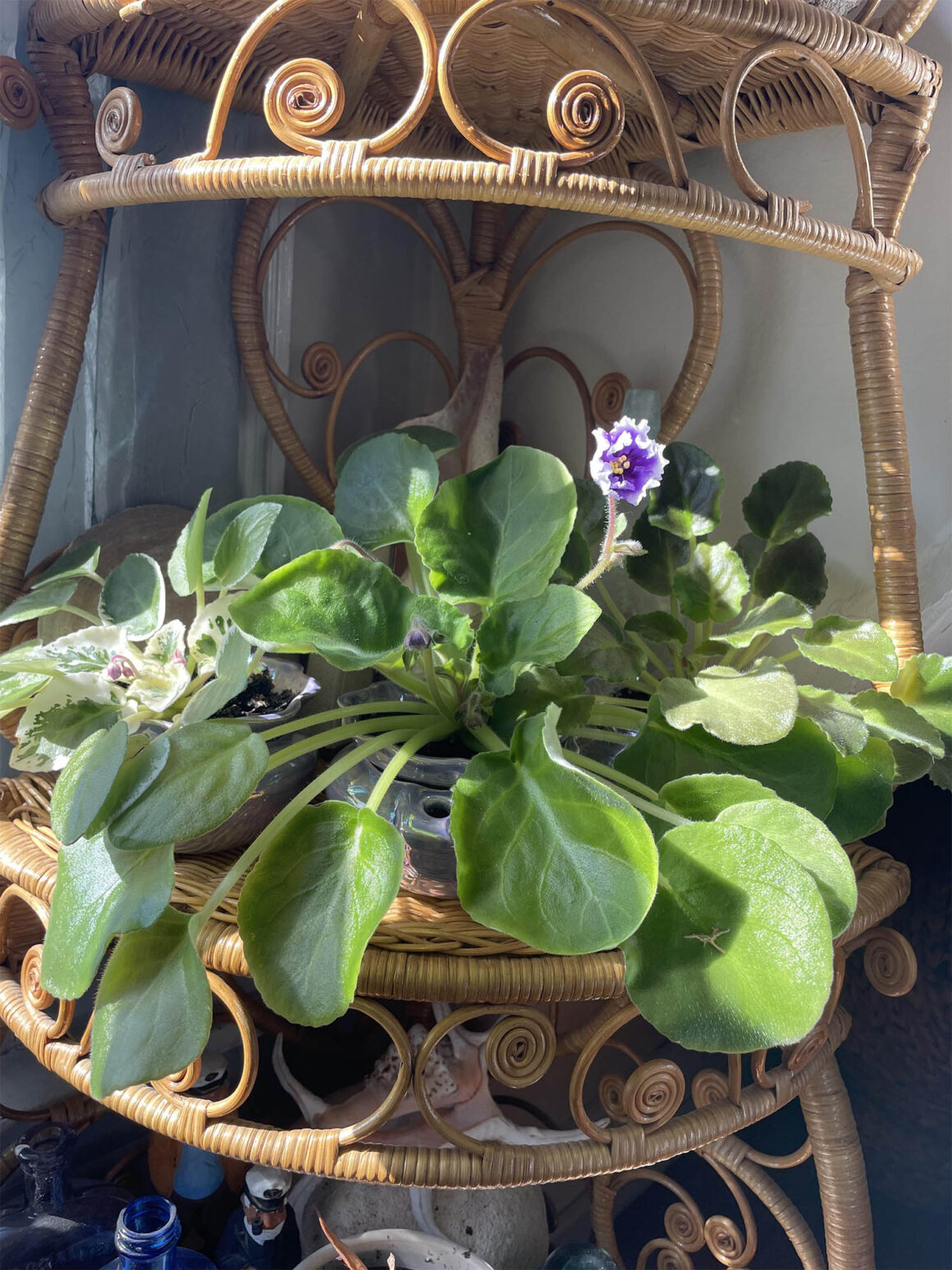
If your plant won’t blossom, try moving it closer to a window, or into a room with more light exposure. Just don’t let it get burned by placing it in direct sunlight. East-facing windows work well, since they’re brightest when the day is coolest. Windows looking south or west may be too hot, but shading them with sheer curtains reduces the risk. So does placing your African Violet at least 6 feet away from the sill.
Full-spectrum grow lights can make up for a dim space. LED or fluorescent lamps are best. Remember to position your grow light a foot or more above your African Violet so the leaves don’t burn. And don’t leave them on constantly – use a timer. Constant light isn’t good for flowering – your Saintpaulia should get at least 8 hours of darkness per day.
#2: Your African Violet is Overgrown
Even if your Saintpaulia is getting enough energy, it could be spending it in the wrong places. An African Violet that’s supporting lots of foliage may not have the resources to spare for making flowers.
That’s especially true if it’s producing suckers. Those are the clusters of new leaves that pop out from the main stem, also called “pups”. This is an alternate way for African Violets to reproduce – those suckers can grow into full plants in time. And they siphon even more energy than ordinary foliage. When your Saintpaulia is multiplying through suckers, it may not bother to produce flowers.
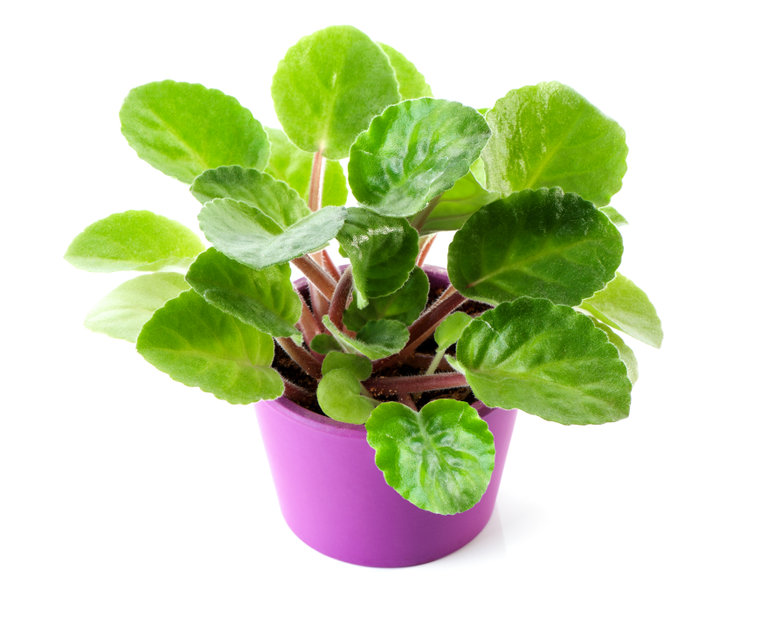
In general, an African Violet only needs 3 to 5 rows of leaves to stay healthy. If it has more than that, you can remove some to help it bloom. To check for suckers, look for smaller leaves hiding under larger ones. This is the opposite of normal African Violet growth, in which new leaves pop up from the top and center.
You can remove most leaves or suckers by pinching them off where they connect to the stem. Slice off stubborn ones with a disinfected paring knife. You may want to repot your African Violet afterward to conceal the exposed part of the stalk.
#3: Your African Violet is Underwatered or Overwatered
Problems with your African Violet’s roots can also put the brakes on its blooming. And maintaining a fairly consistent level of soil moisture is the most important way to promote healthy roots. If the potting mix is dry, crusty, and pulling back from the walls of the pot, you’re not watering enough. If it’s constantly soggy, you’re watering too much.
To avoid these errors, test the potting mix every few days with your finger. If the top inch feels damp, wait and check again in a day or two. If it feels dry, water until the soil is soaked through.
Watering issues are much easier to avoid if your plant is in the right kind of soil. Use a light, fluffy potting mix with good drainage. Check out this article for advice on preparing the right blend.
#4: Your African Violet’s Pot is Too Large
In the wild, African Violets grow in tight crevices in the rocks of high-altitude rainforests. They flower most vigorously when their pots are also a little bit tight. If there’s a large amount of space in your Saintpaulia’s container, it may focus more on spreading out its roots than on producing blooms.
This does not mean that these plants like to be root bound, despite what some articles claim. If your African Violet’s roots get too crowded in its pot, its leaves will turn brown, wilted, and crispy.
However, you should avoid keeping your African Violet in an overly large pot. A good rule of thumb is that the container should be ⅓ to ⅔ as wide as the foliage. If yours is too big, consider repotting your Saintpaulia into a snugger space.
#5: Your African Violet is Too Cold or Hot
Tropical plants like tropical temperatures. When they’re too cold, African Violets won’t be interested in blooming. Frosty air will also stunt their overall growth. At the same time, excessive heat will stress them and discourage flowering.
The perfect temperature range for African Violets to bloom is 70-85 degrees during the day and 65-70 degrees at night. Occasional dips or bumps outside this range won’t be an issue. But sustained exposure to highs and lows may stop your Saintpaulia from blossoming.
Make sure your plant isn’t sitting near a drafty doorway or window, or below an overly hot air vent. You may need to keep your African Violet in different spots during the summer and winter.
Extreme cold will make the plant droop and may cause the leaves to get discolored or develop mushy spots. High heat may cause the foliage to shrivel up and turn brittle, with flowers and developing buds dropping off. But mild temperature stress is hard to spot, so check the temperature in your Saintpaulia’s room if it’s not blooming.
#6: The Humidity is Too Low For Your African Violet
Another thing rainforest plants need is moist air. If the humidity is below 50%, that could be why your African Violent isn’t blooming. Even if the plant has begun to form flower buds, they won’t open when the air is too dry. Wilting foliage with browning edges is another possible sign of low humidity.
To check the humidity around your African Violet, make the small investment into a hygrometer. These handy devices can show you quickly both the temperature and humidity level in different areas of your home.
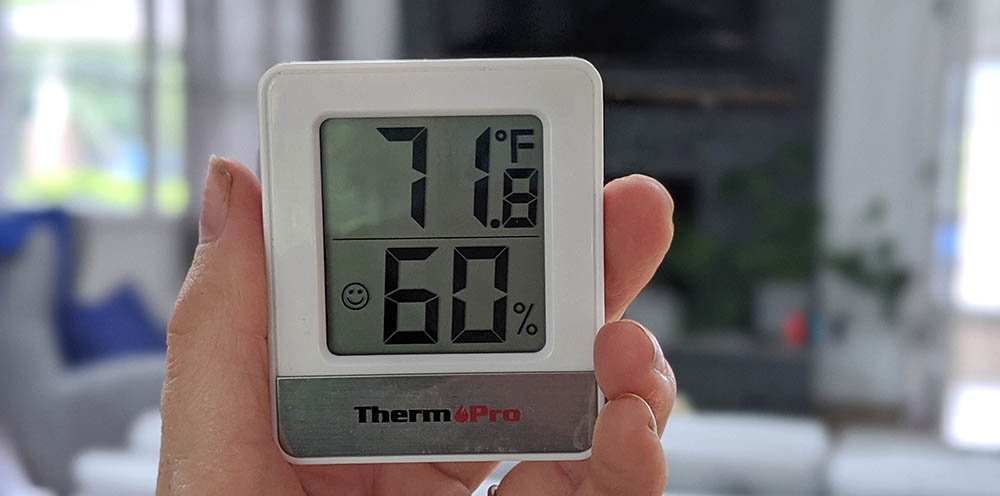
There are a few strategies you can use to get the humidity back where it needs to be. One option is to group your Saintpaulias together or cluster them with other tropical plants. This creates a moisture microclimate in the spot you’ve chosen. Adding some open containers of water nearby will enhance the effect. Just don’t place the plants so close together that their leaves are touching.
A humidifier is an even more reliable way to maintain moist air. So is placing your African Violet inside a terrarium. A closed (or mostly closed) glass container traps so much humidity that you hardly ever need to water your plant. Read this article for some pointers on raising plants in terrariums.
#7: Your African Violet Needs Fertilizer
Wild African Violets are nourished by decaying bits and pieces of the jungle where they live. Indoor plants don’t have that option. Your plant will occasionally need you to provide some fertilizer. Otherwise, it won’t have the building blocks for its flowers.
Please note that we said “occasionally”. Saintpaulias aren’t very greedy for fertilizer. A small dose every 4-6 weeks is usually all they need. Choose a fertilizer with a balanced NPK ratio and dilute it to ¼ of the strength recommended on the package.
If you don’t want to use synthetic fertilizer, you could add some worm castings to the soil. Spread a half-inch-thick layer over the surface. Or include it in the soil when you repot your African Violet. If 10-20% of the total volume is vermicompost, it should last your plant at least 6 months.
You don’t need to fertilize if your plant is in store-bought potting mix that’s less than a year old. Commercial blends pretty much always include some nutrients.
If your African Violet still seems to be struggling to bloom, you could try increasing the fertilizer dose. Don’t do this until you’ve ruled out all the other problems we mentioned. A nutrient overdose is much worse for your Saintpaulia than a shortage. Increase the amount of fertilizer slowly. If the leaves begin turning brown and crunchy, stop fertilizing right away. Then flush the soil by giving your African Violet a much heavier watering than usual.
Final Thoughts
When you’re trying to figure out why your African Violet isn’t blooming, look for what it lacks. Is it getting too little light? Too little water? Has it been a while since you gave it a haircut? You may be surprised at how much your plant blooms after a small improvement in its growing conditions. When you make your African Violet happy, it will respond with a healthy burst of flowers.






